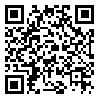Volume 20, Issue 1 (2017)
mjms 2017, 20(1): 53-61 |
Back to browse issues page
Download citation:
BibTeX | RIS | EndNote | Medlars | ProCite | Reference Manager | RefWorks
Send citation to:



BibTeX | RIS | EndNote | Medlars | ProCite | Reference Manager | RefWorks
Send citation to:
Moradi E, Dalimi A, Sadraei J. Trichomonas vaginalis Genotyping Isolated from Women of Mahshahr, Iran by Nested-PCR. mjms 2017; 20 (1) :53-61
URL: http://mjms.modares.ac.ir/article-30-8909-en.html
URL: http://mjms.modares.ac.ir/article-30-8909-en.html
1- Department of Parasitology, Faculty of Medical Sciences, Tarbiat Modares University, Tehran, Iran
Abstract: (8388 Views)
Objective: Trichomonas vaginalis (T. vaginalis) is a pathogenic protozoan of human reproductive-urinary systems that causes trichomoniasis. The disease is the most important non-viral sexually transmitted infection worldwide. Various laboratory methods have been used to diagnose T. vaginalis. Based on the actin gene, 6 genotypes (H, G, E, I, M, N) of T. vaginalis have been identified. In most studies, the clinical samples were cultured initially and then genotyped. In this study, we sought to identify and determine the genotype of T. vaginalis in urine samples from infected women in Mahshahr, Khuzestan Province, Iran.
Methods: Urine samples were collected from 2200 women who referred to the Laboratory of Imam Musa Kazim Hospital of Mahshahr. After microscopical examination, we extracted the parasite’s DNA from 34 positive urine samples. Then, the actin gene of the parasite was amplified by nested-PCR. Finally the PCR products of actin gene were sequenced.
Results: Totally, 34 samples (54.1%) tested positive for T. vaginalis. After sequencing, the genotype of the parasite was identified as E in Mahshahr.
Conclusion: Genotype E of T. vaginalis is the single genotype among women residents of Mahshahr. No genotypic variation was seen.
Methods: Urine samples were collected from 2200 women who referred to the Laboratory of Imam Musa Kazim Hospital of Mahshahr. After microscopical examination, we extracted the parasite’s DNA from 34 positive urine samples. Then, the actin gene of the parasite was amplified by nested-PCR. Finally the PCR products of actin gene were sequenced.
Results: Totally, 34 samples (54.1%) tested positive for T. vaginalis. After sequencing, the genotype of the parasite was identified as E in Mahshahr.
Conclusion: Genotype E of T. vaginalis is the single genotype among women residents of Mahshahr. No genotypic variation was seen.
Article Type: Original Manuscipt |
Subject:
Medical Parasitology
Received: 2017/02/15 | Accepted: 2017/05/21
Received: 2017/02/15 | Accepted: 2017/05/21
| Rights and permissions | |
 |
This work is licensed under a Creative Commons Attribution-NonCommercial 4.0 International License. |







